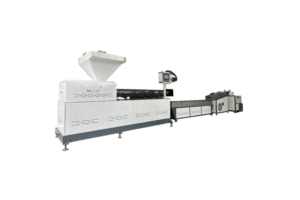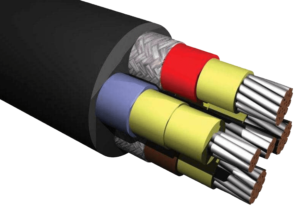Global impact of the plastics environment
Plastic pollution has become one of the most pressing environmental issues facing humanity in the 21st century. Plastics are inexpensive, versatile materials made primarily from fossil fuels. Their low cost and multitude of applications have led to a massive increase in global plastic production—from 2 million metric tons in 1950 to over 400 million metric tons today. However, the popularity of plastics has also resulted in severe environmental consequences around the world.
When plastics enter natural environments, they break down into tiny particles called microplastics. But unlike organic materials, plastics do not biodegrade back into the ecosystem. Instead, they photodegrade, becoming microplastics that accumulate in the environment. Studies have detected microplastics virtually everywhere—in the air, soil, lakes, rivers and oceans. The toxicity impacts marine life through ingestion and absorption of plastic chemicals. Over 260 species, including commercially valuable fish and shellfish have been documented ingesting microplastics.

Plastics also leach hazardous chemicals like bisphenol A (BPA) and polystyrene, which have been linked to developmental and reproductive health issues in wildlife and humans. Plus, plastic waste clogs waterways, contributes to flooding risk, and serves as a vector spreading invasive species. The visible impacts on landscapes, waterways and oceans also have economic implications for fisheries, tourism and recreation.
While the health of our planet is reason enough to curb plastic waste, scientists estimate that without intervention, the flow of plastics into the ocean could triple by 2040. But there are solutions. We can develop new biodegradable plastics using organic materials like cellulose from plants and food waste. We can also improve waste management infrastructure globally and create effective collection and recycling programs. Most importantly, we have to connect these solutions to public policy, corporate responsibility and consumer behavior change. Regulating single use plastics, extending producer responsibility and nudging people towards reusable alternatives are key strategies.
In conclusion, the global plastic waste crisis is an urgent environmental and economic problem. But there are viable solutions if we act quickly and collaboratively across all sectors of society. We cannot afford to develop and circulate products without planning for their end of life. There is too much at stake for human and environmental health. All stakeholders must come together to implement a circular economy approach to plastics.
How to Recycle Plastic Scrap
As plastic pollution continues to accumulate in landfills and natural environments at alarming rates, the circular economy concept has gained momentum across all sectors. The circular economy aims to keep materials in use by reimagining waste streams as resources for new products. Specifically, recycling our plastic waste back into usable raw materials and products presents a significant opportunity. With strategic investments, policy changes and technological innovation, we can transition away from the inefficient and damaging “take, make, dispose” approach that has led to unmanageable waste streams.
Better product design could enable easier recycling and sustainable transformation into new goods. For example, using mono-materials instead of multi-layered mixes allows products to be easily separated by polymer. Labels, inks and adhesives must also avoid toxicity issues that can contaminate recyclates. What’s more, all plastics could offer embedded tracking via barcodes, RFID or digital watermarking to provide more data on product composition and aid in more efficient recycling.
More widespread adoption of programs like extended producer responsibility and required recycled content will also facilitate plastic recycling. These programs place accountability for end-of-life waste back onto manufacturers while creating market demand for recycled materials. The combination of requirements and consequences applicable by governments can ensure broader participation across industries.
Technological development also offers promise. Depolymerization using chemicals, microwave radiation and enzymes can break plastics down for easy remanufacturing. Thermolysis via low oxygen environments and extreme heat also shows potential. Similarly, collecting plastic waste via pyrolysis allows the captured oil and gas byproducts to be used as energy or manufacturing inputs. Further investment into scalable systems and processing infrastructure will make plastic-to-plastic recycling more financially viable.
Recycling Plastic Waste into Secondary Pellets Using Reclaimers
So how do we get through the plastic recycling machinery and achieve a reliable plastic recycling program for secondary use?
As global plastic production is projected to grow exponentially, reclaiming post-consumer plastic waste into usable materials represents a critical strategy for the new plastics economy. When developed consciously, plastic reclamation programs create localized supply chains to reintroduce recycled plastics back into economies. However, building out the infrastructure for collection, sorting and reprocessing at scale remains complex. Strategic implementation of mechanical recycling technology paired with process improvements can lead to high quality, homogenous recyclates ready for reuse in manufacturing.
Diverting Plastic Waste Streams The first challenge involves accessing a consistent supply of plastic waste. As 82% of plastics currently get landfilled, incinerated or discarded into ecosystems, waste management infrastructure must improve to capture plastic materials for recycling. Policy measures play an integral role, where governments pass legislation to increase landfill fees paired with mandatory recycling and extended producer responsibility programs. These frameworks incentivize municipalities and businesses to improve collection routes while holding manufacturers accountable for recovering plastic packaging they create.
Additionally, innovating advanced sorting at materials recovery facilities simplifies separation and directs greater volumes of plastics to proper reclamation channels. Equipment like optical sorters, ballistic separators, infrared spectroscopy and float-sink tanks leverage physical and chemical properties to isolate target plastics from waste streams. What’s more, developing artificial intelligence and machine learning to control this sorting hardware can continuously improve accuracy and output rates.
Preprocessing and Decontaminating Inputs After collecting and sorting plastic waste materials, additional preprocessing prepares scrap for the reclaimer. First, manual sorting removes any remnants of unwanted materials, particularly paper and metals, before automated shredders granulate plastic waste to uniform sizes. Granulated flakes then undergo further cleansing processes to extract additional impurities.
Freeze-granulation immerses waste in liquid nitrogen, making impurities brittle for vibration and separation. Additionally, hydrocyclone separators utilize density differentials in a vortex filtration system to filter contamination. However, the primary decontamination method involves wash plants with various aqueous solutions to filter, settle and decant solids from plastic particulates. Adjusting chemical properties like pH levels and solvent polarity during this phase can target the removal of glues, paper, inks, oils and product residues.
Feeding Reclamation Machinery Once plastic waste gets reduced to cleaned flakes or powders, the purified materials go on to reclaimers for regeneration. Plastics reclaimers first utilize metal detection and removal magnets to extract final contaminants before feeding inputs into a heated extruder.
Within the extruder, plastic flakes get compressed, melted and homogenized into a viscous molten liquid. Multiple filtering screens then extract any lingering particulate matter before the flow reaches consistent temperature and viscosity. Finally, the filtered melt gets pushed through a die head to form strands that immediately pass through a cooling bath. After cooling and solidifying, the plastic strands get chopped into uniform pellets ready for sorting, testing and reuse.
Sorting, Testing and Certifying Plastic Pellets While automated sorting can isolate target polymers, manual sorting afterwards ensures batch purity based on optical properties, product codes and densities. Strict testing follows to analyze melt flow rate, viscosity, density and mechanical performance. Spectroscopic techniques help characterize polymer integrity, additive levels and any lingering impurities. Quantifying these metrics produces a specification sheet for each pellet batch.
Matching the physical and chemical characteristics against known classifications certifies recycled pellets as suitable inputs for various manufacturing methods like injection molding, blow molding or rotational molding. Certified batches then enter inventory management systems to get integrated into production orders. Implementing blockchain or other emerging traceability technology can document these attributes for reliable circular supply chains.
Optimizing Reclamation Processes To maximize reclaimer productivity, operators can optimize configurations to suit input streams and product requirements. This includes modifying screw geometry, temperature profiles, filtration systems, feed rates and final die plates. Additionally, exploring chemical compatibilization methods helps process contaminated plastics that currently overwhelm reprocessors.
For example, researchers successfully blended acrylate monomers into recycled plastics to improve mechanical performance. Further developing these purification techniques provides viability for harder-to-recycle mixed and multi-layer plastics. Overall, an integrated system focusing on waste stream diversions, advanced sorting methods and optimized mechanical recycling technology can drive large scale plastic reclamation. The resulting high quality recycled pellets offer manufacturers affordable alternatives to help decouple plastic production from additional fossil fuels.









